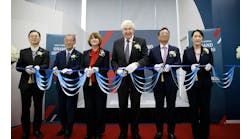The Fieldbus Foundation updated its open, non-proprietary Foundation fieldbus physical layer technology, improving reliability and availability of fieldbus control system installations with enhancements to the H1 (31.25 kbps) device coupler test specification. The changes will also optimize device interoperability and integration, according to the Fieldbus Foundation.
Device couplers or isolated device couplers are installed where the fieldbus trunk is connected to the various device spurs. Isolated device couplers are specifically designed to allow automation end users to connect more devices per coupler while permitting live segment work in hazardous plant areas. These couplers provide isolated, conditioned power to multiple fieldbus devices and protect against short circuits caused by excess current in a spur. By enabling more devices per segment, they also help reduce controller I/O points and associated installation costs.
The Foundation fieldbus device coupler test specification includes criteria from the IEC 61158 standard and additional functional tests such as input impedance, short-circuit reaction time, and bus voltage consumption. The specification is designed for coupler manufacturers to perform a standard set of tests against their implementation. A team of volunteers — current members of the foundation who supply coupler products, as well as end users employing registered couplers — developed the test cases.
"Our device coupler test specification is intended to provide a high level of robustness in fieldbus systems," said Stephen Mitschke, the Fieldbus Foundation's director-fieldbus products. “The resulting registered products are tested to perform optimally with registered power supplies and conditioners, as well as registered H1 cable.”
The latest enhancements to the Foundation fieldbus physical layer specifications will provide end users with greater confidence that registered fieldbus equipment can be employed in a tightly integrated, interoperable control system architecture that is well suited to the most demanding industrial environments, Mitschke added.



